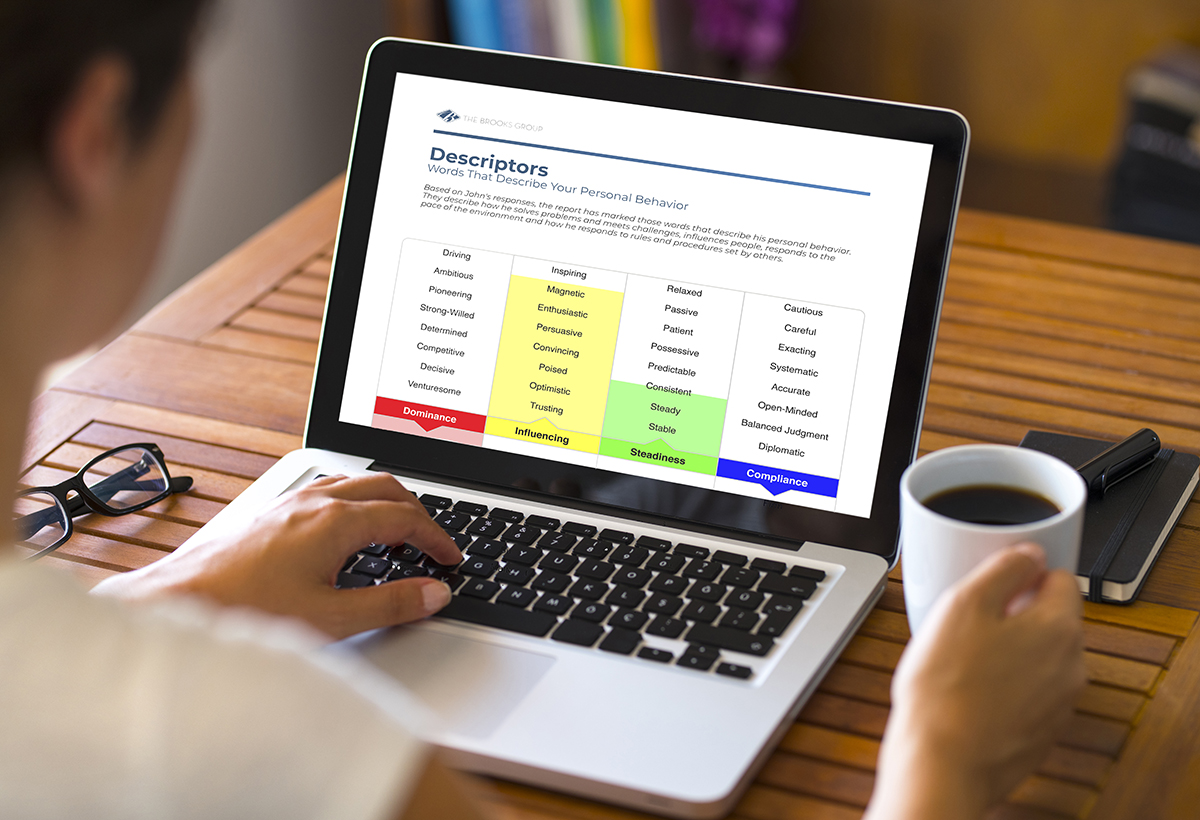“We do not learn, and that what we call learning is only a process of recollection.”
—Plato
)infSquare Pegs Are Not Self-Aware
As a sales leader, most coaching stems from the need for change. Either you need your team to take advantage of a new opportunity, or you need them to improve something so they can maximize current ones.
In either case, the root of conflict between managers and salespeople occurs when salespeople don’t do what their manager thinks they should be doing.
The saying “don’t put a square peg into a round hole” likely arose from that type of prolonged conflict. As a leader, you have to remember that not all pegs have the necessary self-awareness to solve the problem.
This isn’t meant to be critical, but you might not either.
That is where assessments come in. Here are five reasons why you should use assessments to inform your coaching.
1. You’ll Do a Better Job Hiring
Hiring and coaching are more closely related than you may think. There is no such thing as a perfect new hire, or “perfect person for the job”. Everyone will have something to learn when they start, and you’ll likely have to teach it to them.
You want to ensure that your employees are working in a role that isn’t suited to their style. Otherwise, the job fit will be a little painful, meaning performance and job satisfaction will suffer.
Let’s look at three hypothetical job openings.
- 100% commission, with a $250k annual earning potential.
- $50k base pay, with a $150k annual earning potential.
- $80k base, with a potential $10k bonus.
All three of those sales jobs may require a proactive go-getter with a “hunter” mindset. What attracts someone to each of those jobs, however, will be different.
Without assessments, you may think you’ve got a superstar in an interview, only to find out they aren’t properly motivated to do the job you need them to do. In short, you’re guessing.
2. You’ll Genuinely Understand Your Team
There is no one-size-fits-all approach when it comes to coaching. When you read the report from the Brooks Talent Assessment, you will understand each of your team member’s:
- Behavior style (DISC assessment)
- Driving forces
- Competencies
- Acumen
Unfortunately, many leaders overemphasize the value of the DISC assessment and neglect everything else. You can usually identify someone’s DISC style in general by body language and other external factors. It’s more difficult to figure out someone’s driving forces.
You can use your knowledge of each seller’s behavior style, what motivates them, and the personal skills they’ve developed to guide your coaching so you can direct people toward the change you want to see.
Knowing a seller’s behavior style will inform how you communicate with them. Knowing their driving forces will tell you how to inspire them (you can make a lot of money vs. you can be the team’s subject matter expert on this product). Finally, knowing what competencies they’ve developed will tell you what to expect while coaching them.
3. You’ll Have Highly Satisfied Employees
Good leaders are usually humble, but they do recognize that they themselves are one of the benefits to the salespeople who report to them. They are intentional about finding ways to provide value to their team.
Managers who use assessments get insight into who their salespeople are that would otherwise take years to learn. It improves their ability to connect with their team. While it’s not quite therapy, it’s kind of close. Your people get a check-in from a manager who really understands them.
People are also much less likely to leave the team when they are happy.
4. Jobs Change Over Time
When you break it down, a job is an assortment of tasks that are assigned to a specific person. Technology is constantly changing those tasks, and how they get done. As you know, change has a way of creating friction for people.
It was interesting how outgoing, charismatic salespeople, who relied on their personalities to build relationships, suffered when the world adjusted to virtual meetings. To some, Zoom was just a new way of doing business. To others, it was a deviation from traditional, in-person meetings—and it hurt.
Assessments shed a lot of light on situations like that. Obviously, reps who value relationships, and are motivated by maintaining the status quo, are going to take a bigger hit when they can’t sit in a room with their prospects anymore.
When your “check engine” light comes on in your car, you plug in the diagnostic tool to see what the problem is. Assessments don’t always make figuring out the problem with an employee that easy, but sometimes they do.
5. People Change
Ray Dalio, a billionaire investor and hedge fund manager said, “Don’t confuse possibilities with probabilities.”
People don’t tend to change as quickly as jobs do, but your people will change over time. Significant emotional events like marriage, divorce, a death in the family, or becoming a parent will shift people’s assessment scores.
Just like a salesperson has to go through the IMPACT steps again when something major changes for one of their clients, sales managers need to reassess an employee when something major changes in their life.
If you think your people are the same as they were a few years ago, you could be wrong. Significant emotional events have likely occurred for everyone on your team over the last few years. If a few years have passed since your team’s last assessment, it’s definitely time to reassess them.
What To Look for in an Assessment
If you’re using an assessment for hiring, the first thing you need to do is make sure it’s compliant with EEOC and OFCCP hiring laws. Next, you want to make sure the assessment provides reliable information and is highly accurate at predicting behavior.
The Brooks Talent Index is a great place to start. It includes the four components discussed in this article:
- Behavior: Assess behavior with the DISC Personality Assessment to measure four traits: dominance, influence, steadiness, and compliance. Understand behavior style and adapt to customer preferences..
- Driving Forces: Measure personal motivators that drive behavior including knowledge, utility, surroundings, service to others, power, and structure. Learn the factors that engage each sales professional.
- Competencies: Identify top personal competencies out of 25 skills and how well developed they are. Uncover skills gaps and talents and focus coaching to manage and develop sales professionals.
-
Acumen: Measure how individuals think and process information. The Acumen Capacity Index report helps sales professionals perceive themselves and the world around them accurately.
Reach out if you have any questions about the Brooks Talent Index or any of our other assessments. A member of our team will be happy to work with you to ensure you have the training and assessments you need to achieve your goals.




